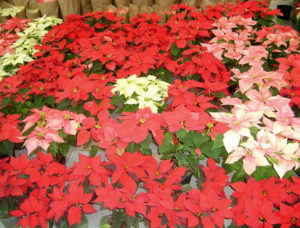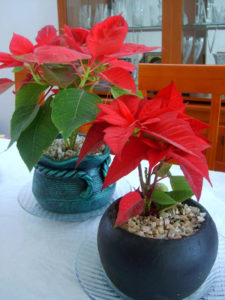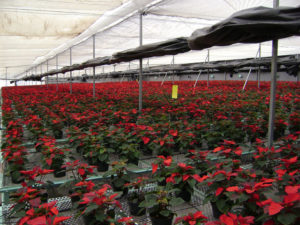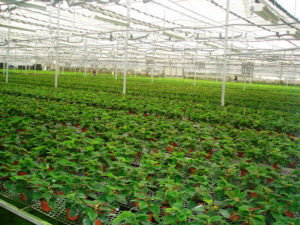Holiday poinsettias are as much a part of the Christmas fabric as the Nativity scene or the traditional wreaths.
Native to Mexico, poinsettias are classic winter bloomers. Commonly known here as flores de nochebuena, or flowers of the Holy Night, have come to resonate with Christians beyond the country’s borders. As many as 500 million fire plants hit the market worldwide during the holiday season.
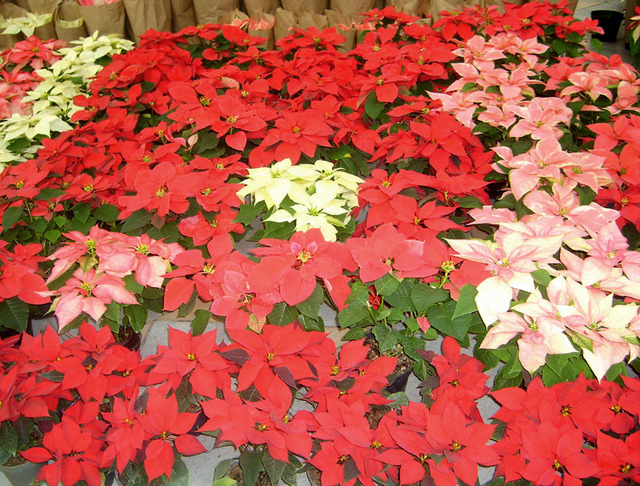
Mexico’s part of that is estimated at 20 million poinsettias with a market value of $400 million pesos, according to the Mexican Secretariat of Agriculture, Livestock, Rural Development, Fisheries and Food (SAGARPA).
“Many people are not aware of the real origin of the cuetlaxochitl, as our ancestors used to call it (the Aztecs cultivated the plant long before Christianity came to the Western hemisphere),” said Dante Vladimir Galindo García, an organizing member of the December 8 Día Nacional de la Nochebuena. “For Mexicans, the plant speaks of our ancestors’ dedication to caring for fauna and the parks of Oaxtepec (today a tourist destination in Morelos featuring spas and an aquatic park) and Chapultepec (Mexico City).”
The production in 2009 also represents a 30 percent increase over 2007 when 15 million potted plants were distributed on the domestic market. By contrast, about 80 million poinsettias are produced in the U.S., with the California-based Paul Ecke Ranch as one of the world’s largest poinsettia producers.
Surprisingly, poinsettias grown in Mexico don’t make the cut for exporting.
“We are proud that a plant native to our country is transcendent from a commercial point of view. But, at the same time, we are sad the majority of plant cuttings are patented abroad,” said Rodolfo Guadarrama González of the Consejo Mexicano de la Flor, or the Mexican Council of the Flower, an organization regrouping plant breeders and suppliers.
Galindo García and Guadarrama González are among a growing number of poinsettia stakeholders in Mexico who are hoping to help boost their presence in the international market. Their efforts include the creation of the Día Nacional de la Nochebuena, which was first held in 2008. To mark the day this year, a series of conferences took place in several poinsettia-growing states, including Morelos — Mexico’s number-one poinsettia producer. As many as six million poinsettias are cultivated in the state of eternal spring, followed by Michoacán and Distrito Federal with five million and three million plants respectively.
“The Día Nacional de la Nochebuena was simultaneously celebrated in Taxco, Guerrero, Chapingo and Xochitla, Estado de Mexico,” continued Galindo García, who also speaks for the Consejo Estatal de Productores de Ornamentales de Morelos, or the Morelos State Council of Producers of Ornamental Plants.
Poinsettias grow in subtropical climates and are usually planted during the months of March and April to be brought into full bloom by November. They come in a variety of sizes and their colors range from spectacular red to the less popular pink, white, and orange.
Here are some tips on how to pick out a good plant and maximize its lifespan indoors:
- Check the plant’s flowers, which are the small yellowish buds in the center of the bright red petals that are in fact leaves or bracts. A plant with closed buds lasts longer. Also, look at the foliage to make sure the plant is in its prime. Discoloration, falling leaves or missing flowers are generally signs of a poor choice.
- Water thoroughly when the soil is dry (the soil must be moist not wet), keep plants in a warm room (14-20 degrees C) with as much natural light as possible and avoid drafts or heat from radiators or appliances.
- Also, keep in mind research suggests poinsettias could trigger severe reactions, such as skin and stomach irritation, in people who are allergic to latex rubber. Place the plant out of children’s as well as pets’ reach.
Whether called poinsettias, nochebuena or cuetlaxochitl, the iconic Christmas plant always arrives as if on cue to deliver holiday cheers and the spirit of the holiday.
“Nochebuena is the symbol of Christmas, family unity, and the birth of baby Jesus,” Galindo García reminds us.

